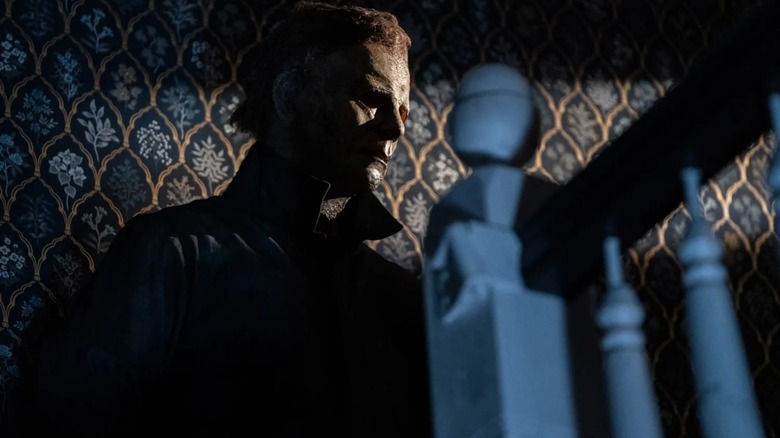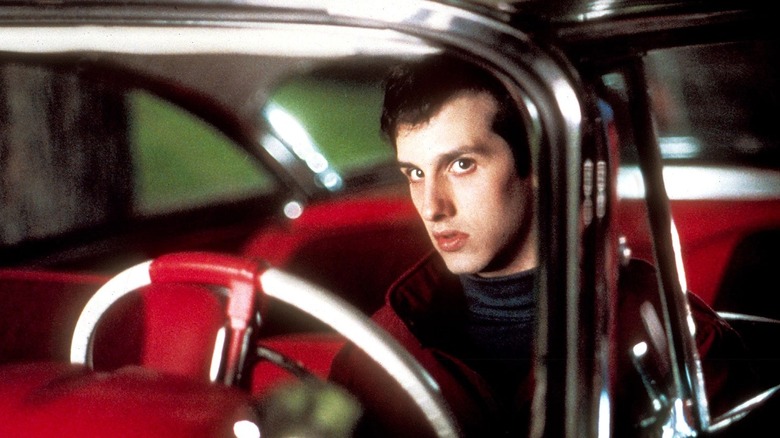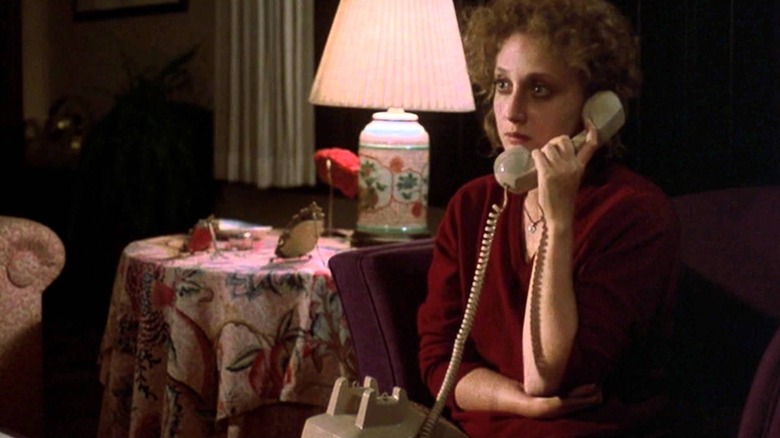Halloween Ends Took Inspiration (And A Last Name) From Another John Carpenter Classic
David Gordon Green's 2022 slasher film "Halloween Ends" is an unusual entry in the series in many ways. In it, the vicious masked serial killer Michael Myers (James Jude Courtney) has been living in a sewer and stays out of the film's central action for the bulk of its running time. "Ends," instead, focuses largely on a character named Corey Cunningham (Rohan Campbell), a man who, two years ago, accidentally killed the young boy he was babysitting. Green envisioned Corey's hometown town of Haddonfield, Illinois as a bitter and wounded place, full of spiteful, hurt people who cannot heal from the murderous damage that Michael caused way back in 1978, as well as his return in 2018. Every citizen is bitter, angry, and paranoid. Corey is bullied and picked on, unable to outlive his mistake.
When Corey wanders into Michael's sewer (he was fleeing bullies), he finds Michael and a strange transference occurs. Michael's evil seems to fuel Corey. Combine that with Corey's social torture, and it seems that this young man will carry on Michael's legacy of murder.
Some critics felt that the focus on Corey wasn't a logical story for a film called "Halloween Ends," which purported to be about the final confrontation between Michael and his most famous near-victim, Laurie Strode (Jamie Lee Curtis). Regardless, "Ends" is a fascinating movie that drew its material not so much from the previous 12 "Halloween" movies, but various other horror films that Green admired. In Abbie Bernstein's new book "Halloween: The Official Making of Halloween, Halloween Kills and Halloween Ends" (perhaps the only book to have four instances of the word "Halloween" in its title), Green reveals he took inspiration from films like "River's Edge," "When a Stranger Calls," and, most notably John Carpenter's 1983 film "Christine."
The strawberry girl
John Carpenter, of course, directed the original "Halloween" in 1978, and would go on to make "Christine" in 1983, an adaptation of Stephen King's novel from the same year. "Christine," also set in 1978, was about a nerdy outsider named Arnie Cunningham (Keith Gordon) who becomes strangely drawn to a red 1958 Plymouth Fury for sale in his neighborhood. Arnie buys the car, nicknamed Christine, and begins fixing it up. His obsession with the car grows and grows ... and the car begins to respond to him. It plays its radio on its own and seemingly begins driving itself. Arnie begins transforming into a 1950s greaser and becomes more and more unbalanced and violent. There is something demonic about the car.
"Christine" is clearly a commentary on the dark legacy the seemingly squeaky-clean image of the 1950s was having on the then-nascent conservative '80s. Stephen King saw the '50s as something to flee, not nostalgia to indulge in. Green, with "Halloween Ends," seemed to want to give the same anti-nostalgia treatment to 1978's "Halloween." There is nothing rosy about serial killers, and violence can, terrifyingly and naturally, become a legacy. Violence, he ultimately argued, cannot provide satisfying catharsis.
It seems the influence on "Halloween Ends" was both direct and thematic. Green said:
"Everything's a little darker, a little more atmospheric than the previous films, trying to make it more that raw, grainy vibe. When we were writing ['Halloween Ends'], me and the writers watched John Carpenter's 'Christine.' We talked about how Keith Gordon's character is bullied — in fact, we got [Corey's] name, Cunningham, from Gordon's character."
Green wrote "Halloween Ends" with Paul Brad Logan, Chris Bernier, and Danny McBride. One can see the parallels. It helps that Campbell looks at least a little bit like Gordon.
Other influences
David Gordon Green also says in Abbie Bernstain's book that he took tonal and visual cues from several other intimate, gritty thrillers and horror movies of the 1970s and 1980s. Those who know Green's early work are familiar with his sensitive and grounded view of neglected, impoverished communities. He clearly is drawn to a very particular aesthetic and seems fascinated with stories of crime and death growing out of neglect and abuse. As such, Green cites several other movies that he seems to have looked to for thriller elements, for elements of abuse, and for teenage criminals. He said:
"I'm a big fan of 'When a Stranger Calls'. Corey's mother, Joan [Joane Baron], is a product of my obsession with a movie called 'Butcher, Baker, Nightmare Maker.' Susan Tyrell plays this kid's obsessive guardian. There are threads of 'My Bodyguard.' Bullies and motorcycles and junkyards. 'River's Edge' is another one."
Fred Walton's 1979 "Stranger" is about a young babysitter (Carol Kane) being stalked by a killer over the phone. William Asher's 1981 "Butcher" is an Oedipal nightmare about a teenage boy (Jimmy McNichol) who witnesses his overprotective aunt (Tyrell) stabbing a man to death. Tony Bill's 1980 "Bodyguard" is a friendlier family drama that features a young boy (Chris Makepeace) who hires a bodyguard (Adam Baldwin) to protect him from a school bully (Matt Dillon). And Tim Hunter's notable 1986 indie darling "River's Edge" follows the crimes and malfeasances of a group of teens in Northern California.
Those familiar with the five above movies will be able to see every bit of them in "Halloween Ends." Green's 2022 film may not have been the violent battle royale some fans wanted, but it may be the most thematically rich of the entire "Halloween" film series.


